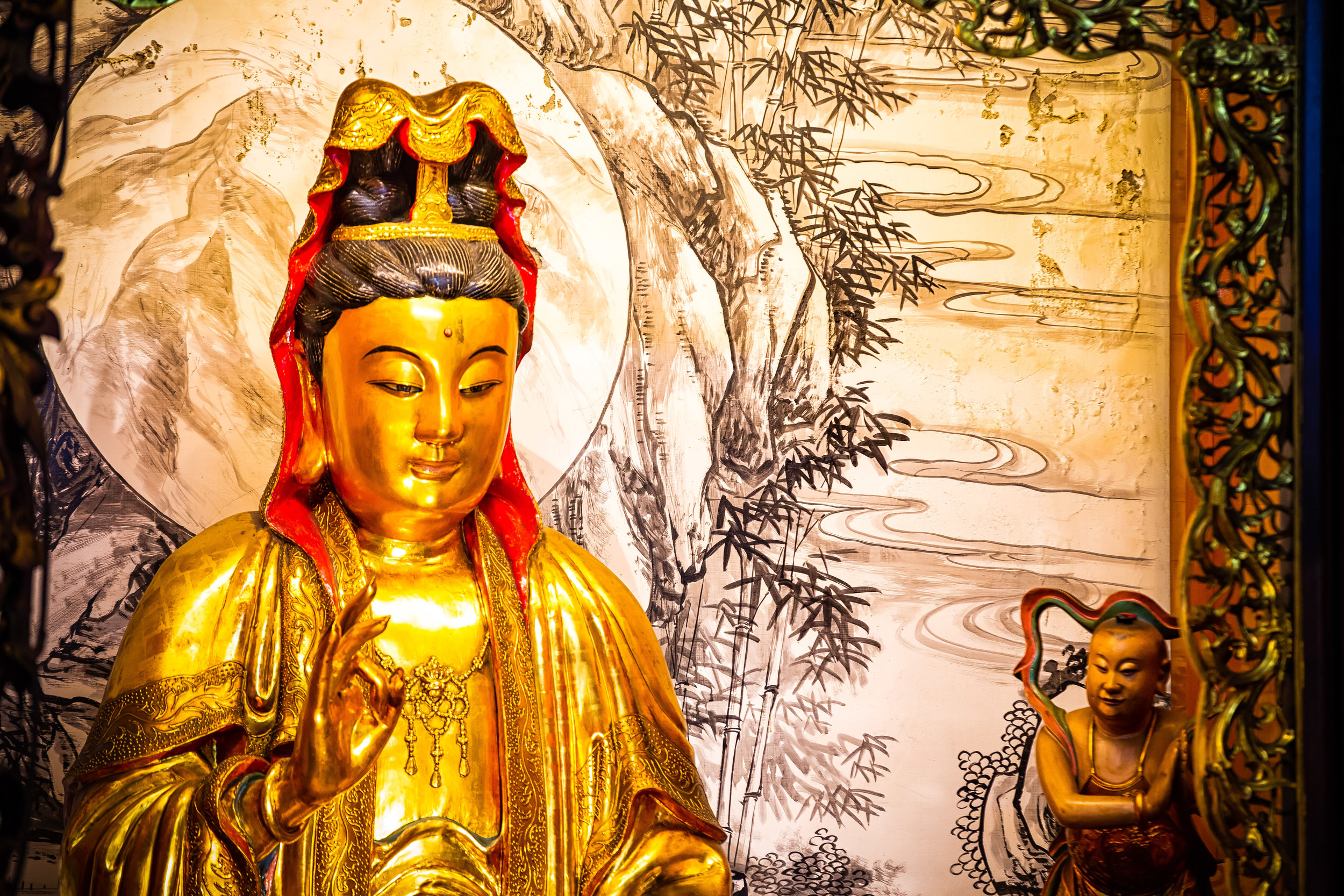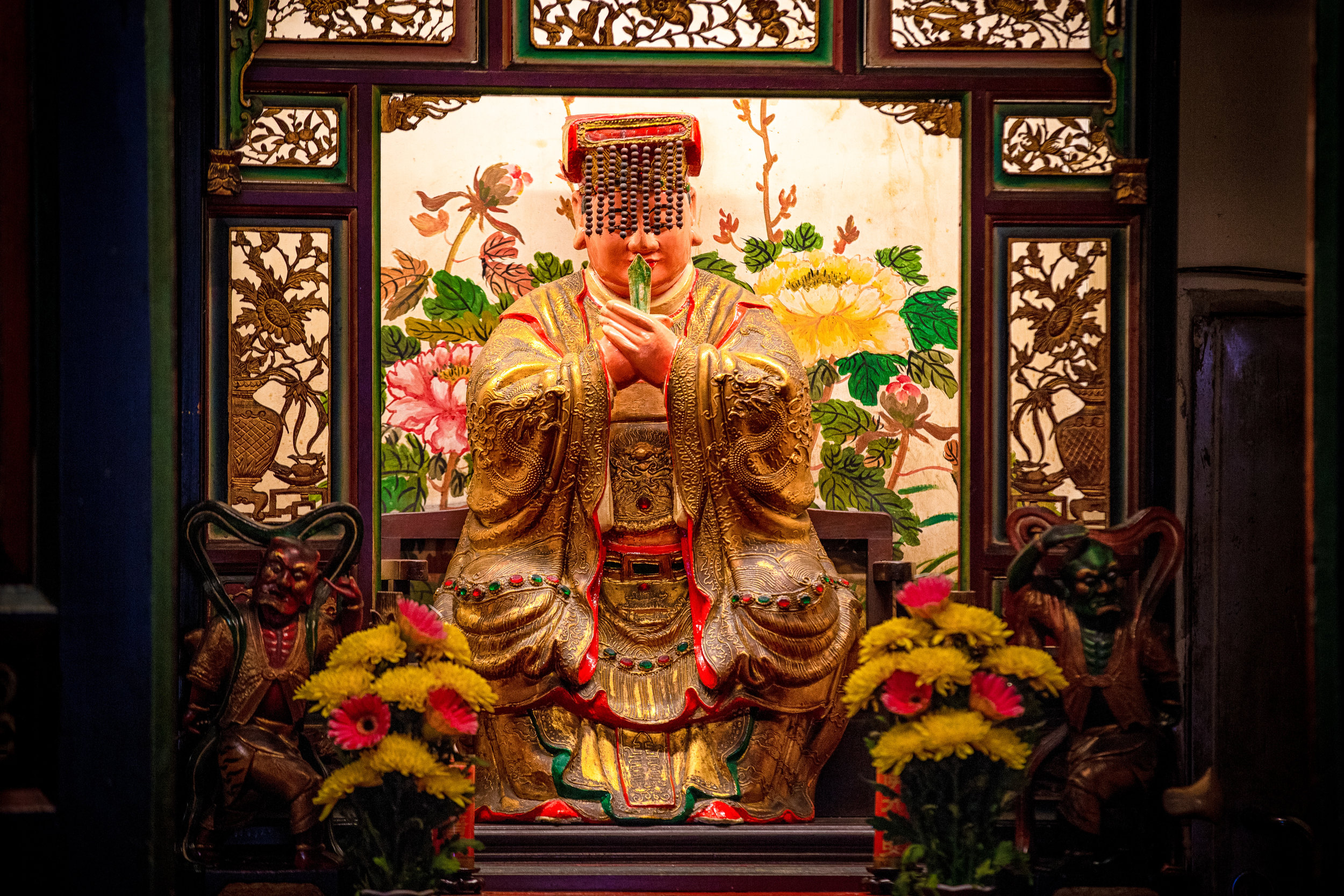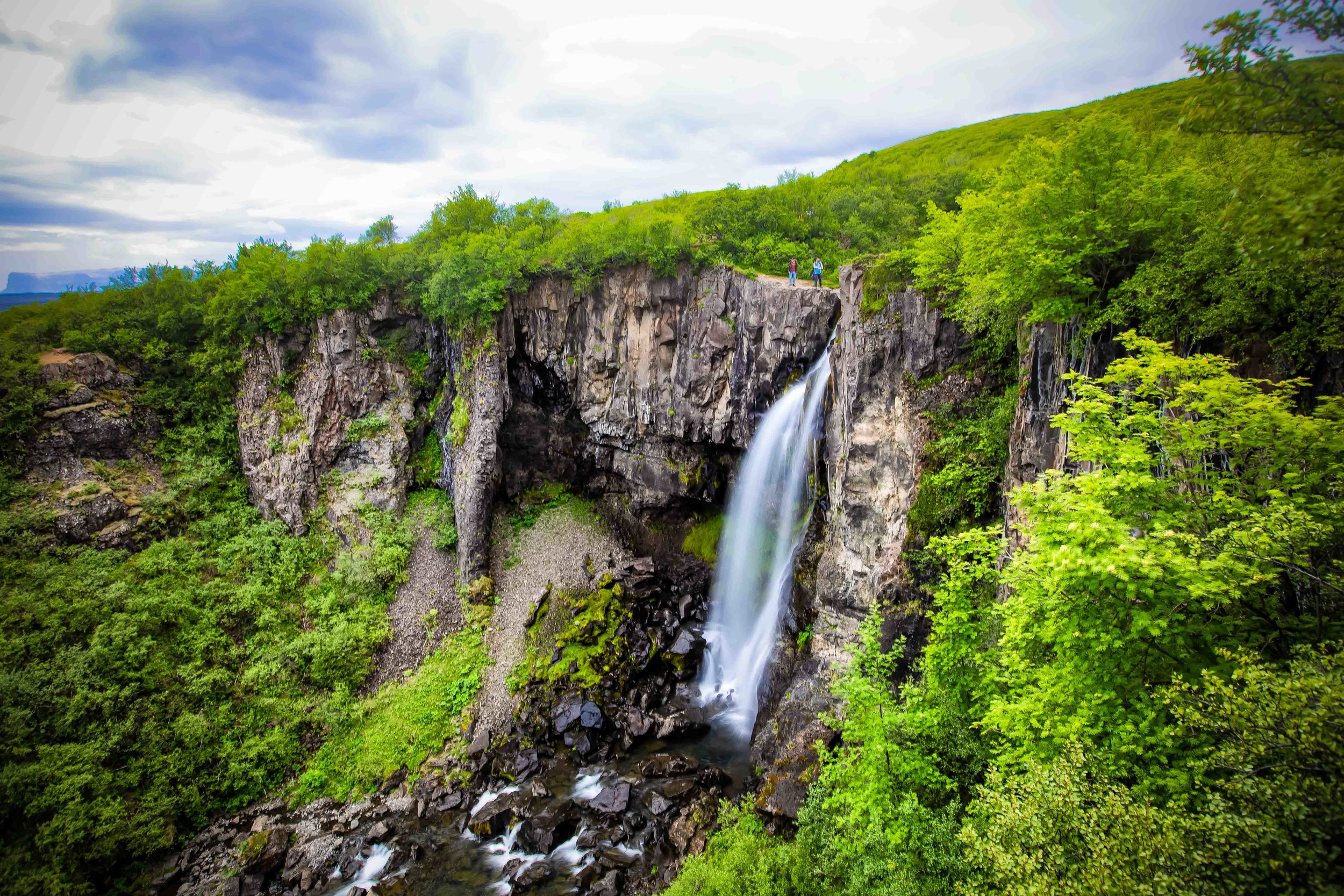When most people plan a day trip to Yilan, their itinerary usually consists of spending time enjoying the beautiful mixture of mountain and ocean landscape, relaxing in a volcanic hot spring bath and of course ending the day with a visit to the famous Luodong Night Market (羅東夜市).
Being the preferred destination for the residents of Taipei, the east coast comes alive on weekends and holidays with city dwellers looking to enjoy a bit of relaxation in one of Taiwan’s most beautiful areas.
I’m not most people though.
Sure, I’m a fan of hot spring resorts and yes the Luodong Night Market is absolutely amazing - But these things are usually only afterthoughts when I’m planning a visit to the area.
The cool thing about Yilan, (at least for me) is that it is full of temples - historic and modern - and they are all huge.
You see, Yilan is made up mostly of farms and that means there is a lot of space.
It is also full of farmers, who have over the past few centuries pooled together their wealth of resources to construct ornate temples that on average dwarf in size the temples that you’ll find throughout the rest of the country.
If you’re a temple-hopper like myself you can most-definitely look forward to a long and enjoyable day exploring whenever you visit Yilan.
I realize that most people aren’t as enthusiastic as I am about this kind of stuff but I still highly recommend that you at least stop by one of Yilan’s massive places of worship to learn a bit about the culture of the area.
While most of Yilan’s temples go out of their way to be large and ornate, the county’s Confucius Temple sits quietly and with little fanfare in the middle of the downtown core of Yilan City.
Confucius Temple’s can seem a bit out of place when compared to Taiwan’s other places of worship considering they stress a philosophy of simplicity while all the Taoist and Folk-Religion temples go out of their way to be the exact opposite.
If you’ve followed my blog over the past few years you may have noticed that one of my personal projects has been to photograph and introduce Taiwan’s various Confucius Temples - Most of which receive very little attention from English-language writers or travel guides.
Link: The Confucius Temples of Taiwan
This historic temple has been on my list of places to visit for quite some time and although I was forewarned that it is a bit disappointing in comparison to the other Confucius Temple’s around the country, I was still happy to be able to check it off the list and introduce it to anyone who’d like to visit.
The Yilan Confucius Temple (宜蘭孔廟)
There is very little English-language literature available online about this temple but what you will be able to find is the bold claim that the temple has a long history dating back to 1868.
While this isn’t technically a false claim, it isn’t exactly true either.
The history of the Yilan Confucius Temple is actually a tale of two different temples which were constructed in two different locations.
You may think that this is some sort of translation error but Chinese-language literature is quick to offer the same dates as historic fact.
Basically the history of a “Confucius Temple” in Yilan, or the “organization” that took care of the temple dates back over a century and a half but doesn’t actually relate to the building that you see today.
The Old Confucius Temple (舊孔廟)
Dating back to the Qing Dynasty, the original Confucius Temple was constructed near the Eastern Gate (東門) within (was was then) the walled area of “Komalan Sub-prefecture” (葛瑪蘭廳).
The original temple was modelled after the design of the Tainan Confucius Temple but was renowned for having the ‘Most beautiful Dacheng Hall in all of Taiwan’ (全台最美的大成殿).
Today all that remains of the original temple is a simple brick wall in a narrow alley within the Xinmin Road Central Market (新民路中央市場).
Construction started in 1868 and when it was completed a few years later it was the largest structure within the walled-city and also one of the most important.
Unlike the current iteration of the temple, the original was considered to be a more “complete” Confucius Temple which (as mentioned above) was based off of the Tainan design.
Link: Tainan Confucius Temple (台南孔廟)
The temple consisted of a Lingxing Gate (櫺星門), Dacheng Hall (大成殿), Chongsheng Hall (崇聖祠), Minglun Hall (明倫堂), several different gates, a pond, a bridge, a courtyard, etc.
During the latter stages of the Qing Dynasty, emphasis was placed on the promotion of Confucian-style education and governance making the temple an important symbol and the only one on the eastern coast of the island.
When the Japanese Colonial Era began in 1895, the government was quick to institute modern educational reforms and the temple was repurposed as a medical centre until a proper hospital could be constructed. When the medical facilities were later relocated to a newly constructed hospital, the temple complex was left abandoned and fell into a state of disrepair.
In the years following it was damaged several times by typhoons and earthquakes as well as the American bombing campaigns during the Second World War.
In 1951, a series of devastating typhoons damaged the temple beyond repair and it was decided that it would have to be torn down and rebuilt.
Demolition and Construction Controversies
In Taiwan, the demolition of a Temple is no simple matter and there are an infinite amount of considerations that need to take place before a temple is torn down.
Confucius Temples are a bit different than Buddhist, Taoist or Folk Religion places of worship in terms of superstition, however there is still a tremendous amount of respect for the building and what it stands for.
So, when it came time for solutions to deal with the dilapidated Yilan Confucius Temple it became a situation that created quite a few controversies.
First, the demolition would have to be taken care of in a respectful manner, but the company that was charged with its demolition was charged with violating its contract and stealing the precious timber that was used to construct the temple.
While the temple was being demolished, the question of where the new temple would be constructed also became a point of contention that erupted in public protests.
The government had selected the site of the Yilan Shinto Shrine (宜蘭神社) in the nearby Yuanshan Township (員山鄉) as the place where the shrine would be built. The problem with this was that even though the Shinto Shrine was a reminder of Taiwan’s colonial past, it was still considered a sacred site, so replacing it with a Confucius Temple proved to be quite unpopular.
Another issue is that Confucius Temples are traditionally constructed near schools on a flat piece of land - The site of the Yilan Shinto Shrine however wasn’t near a school and it was constructed on a mountain which meant that the construction of a Confucian Temple in this area would defy traditional architectural standards which were set almost a thousand years earlier.
The government eventually capitulated and selected a site that was near Yilan City’s North Gate (北門) and more importantly, next to a school.
Unfortunately the project to construct a new temple met with financial constraints and forced the construction team to take shortcuts not only with the design of the temple but also the materials that would be used to build it. While the current temple generally follows traditional standards, they had to make concessions and used concrete instead of wood to imitate the tradition designs.
That wouldn’t be the last controversy though as while the new Confucius Temple was still under construction it was decided that the site of the original temple would be converted into a traditional wet market, which for some people was an insulting decision. This time however the government didn’t capitulate and a 1200 square meter market known today as the Xinming Road Central Market (新明路中央市場) stands in its place.
The New Confucius Temple (新孔廟)
Construction on the new Yilan Confucius Temple started in 1952 (民國41年) and as mentioned above would end up being a project mired by controversy.
The controversies would continue for the almost two decades it took to complete the project which is coincidentally a reflection of the current state of the temple - Which is suffice to say, one that is not very impressive and is sadly unkept.
In 1954 (民國43年), two years after construction on the temple complex started, the Dacheng Hall would be the first building to be completed making it the oldest structure on site.
It would take until 1969 (民國58年) for most of the other pieces, including the Chongsheng Shrine, Dacheng Gate, side halls, etc. to finally be completed.
One of the common features of Confucian Temples is that they are very minimalist in design and decoration. The Yilan temple however takes that simplicity to an extreme which is not something that was originally intended.
While you’ll find simple wooden carvings and murals on the exterior and interior of Taiwan’s other Confucian Temples, they are all completely absent at the Yilan temple - which is something that could ultimately be rectified if someone actually put a little effort into it
I’m not really able to sugarcoat things when it comes to this Confucius Temple - It isn’t that old but it looks really rundown and uncared for - which is something I was warned about before I went to check it out.
Unlike its counterparts in Taipei and Tainan, this version likely isn’t really considered much of a tourist destination, which is quite evident as when I was there I happened to be the only visitor.
I’m not actually sure why the local government has allowed the temple to become so run down, but I’m sure that with a little TLC it could become an important tourist destination for people visiting Yilan.
Lingxing Gate (櫺星門)
The Lingxing Gate traditionally acts as the entrance to a Confucius Temple.
The gate typically forms a perimeter around the courtyard and the Dacheng Hall with halls connected to the gate on either side of the interior.
In most cases the gate is likely to be the most ornate part of the entire temple with murals to the sides of the main entrance as well as intricate designs on the roof but in the case of the Yilan temple, there is very little in terms of design and comes across as very plain.
Dacheng Hall (大成殿)
The Dacheng Hall which translates loosely as “The Hall of Great Perfection” is the main shrine area of any Confucius temple.
The hall traditionally sits in the middle of a large cobblestone courtyard on an elevated platform with a walkway around the perimeter.
The interior of the hall is a very simple set up with the Confucius Spirit Tablet set up on the main shrine with two plaques above it that read "Education for all" (有教無類), a phrase taken from the Analects of Confucius (論語) and “The Teacher for all Ages” (萬世師表) which is a phrase used to pay honour to Confucius.
There are an additional two shrines in the room found on the left and right walls of the hall which are dedicated to the “Four Sages” (四配) Yan Hui (顏子), Zengzi (曾子), Zisi (子思) and Mencius (孟子). The Four Sages were Confucian scholars who helped to improve upon and spread the philosophy created by their master.
Link: The Four Sages (Wikipedia)
The Dacheng Hall at the Yilan Confucius Temple has a design that differs from most of the other Confucius Temples in Taiwan which to its credit is one of the few aspects of this temple that makes it stand out from the others.
Most notably, from the exterior it looks like it is two storeys in height but in actuality only has one floor with a shrine room that is considerably higher than what you’d generally see in a temple of this kind.
Also of note is the beautifully designed roof which has two different levels with pillars that separate them - while the roof could look better with some of the designs that are common with the other Dacheng Halls around Taiwan, it has been taken over by nature with plants growing on top of it, which I think adds to its beauty.
Chongsheng Shrine (崇聖祠)
The Chongsheng Shrine is traditionally situated behind the main Dacheng Hall in all Confucius Temples. The shrine is used to venerate several generations of the ancestors of Confucius in addition to the various Confucian sages and philosophers throughout history.
This shrine room is not unlike one that you'd find in any large Taiwanese home and acts as an important place for the ancestral worship of Confucius’s descendants, who have spread throughout China, Taiwan and Korea. The Confucius Temples that you find around Asia thus act as an ancestral shrine which offers the family a place to worship.
The Chongsheng Shrine at the Yilan Confucius Temple in particular is a small one and strangely unlike almost all of the other Confucius Temples in Taiwan isn’t open to the public. You can look at the interior of the shrine from the door but there is a gate that blocks access.
Getting There
The Yilan Confucius Temple is situated within the downtown core of Yilan City and is about a ten minute walk from the Yilan Train Station (宜蘭車站).
From the train station simply make a right turn on Yixing Road (宜興路) and once you reach the Donggang Overpass (東港路橋) make a left turn on Xinxing Road (新興路) and keep walking straight until you reach the temple.
If you are driving a car, the temple is located at #170 Xinxing Road (170號新興路) and should have street parking nearby.
The Yilan Confucius Temple isn’t really what I’d consider a tourist destination but if you’re in the area and are looking for something to do, you might want to consider stopping by.
A visit to the temple won’t require much of your time and if you do visit you’ll also be within walking distance of the Dongmen Night Market (東門夜市), the historic Yilan City God Temple (宜蘭城隍廟) and the cutesy Jimmy Park (幾米公園) in front of the Train Station.






































